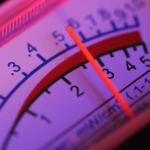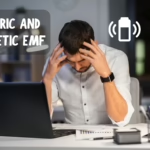Definition and Characteristics
Extremely Low Frequency (ELF) refers to the lower end of the electromagnetic (EM) spectrum with frequencies from 3 Hz to 300 Hz. This range lies below the frequencies used for common electrical power in most countries (50-60 Hz) and extends down to the lowest frequencies that are still classified as EMF. ELF fields are characterized by their long wavelengths, which can extend from thousands of kilometers to ten thousand kilometers. Due to their low energy, ELF fields are non-ionizing, meaning they don’t have enough energy to break molecular bonds or ionize atoms.
Sources of ELF
The primary sources of ELF fields are electrical power lines, electrical wiring, and electrical appliances. Due to the ubiquitous use of electricity, ELF fields are common in homes, workplaces, and public spaces. Natural sources also exist, including geomagnetic fields created by the Earth and atmospheric phenomena, but these are generally weaker than those generated by human-made sources.
Biological Effects of ELF
The biological effects of ELF exposure have been a subject of extensive research and debate. Initial concerns were primarily about the thermal effects of EMFs, which occur at much higher frequencies than ELF. However, scientific interest has shifted towards understanding the potential non-thermal effects of EMF exposure, including those from ELF fields.

Want to Slash Your EMF Health Risks?
Want to Slash Your EMF Health Risks?
Good! Learn the one small change you should make right now.
Numerous studies have investigated the impact of ELF fields on biological systems. These studies have examined a range of potential effects, including changes in cell proliferation, DNA damage, and the production of stress proteins. Some research has suggested possible links between ELF exposure and various health outcomes, such as cancer (particularly childhood leukemia), neurodegenerative diseases, and reproductive issues. However, the results of these studies have been mixed, with some showing associations and others finding no significant effects.
Scientific Studies and Evidence
Thousands of peer-reviewed scientific studies have explored the effects of ELF exposure on health. A significant portion of this research has focused on cancer, with numerous epidemiological studies investigating the relationship between ELF exposure and leukemia, brain tumors, and breast cancer. Laboratory studies have also been conducted to understand the biological mechanisms that could underlie these associations.
One of the key challenges in this research is the difficulty of isolating the effects of ELF exposure from other environmental and genetic factors. Additionally, measuring actual exposure to ELF fields is complex, given their ubiquitous presence and variability over time and space. Despite these challenges, a body of evidence suggests potential health risks associated with ELF exposure, particularly at levels below those required to produce thermal effects.
Regulatory Perspectives and Guidelines
The potential health risks of ELF fields have led to the development of guidelines and exposure limits by international and national health and safety organizations. These guidelines, such as those issued by the International Commission on Non-Ionizing Radiation Protection (ICNIRP) and the World Health Organization (WHO), are based on the current scientific understanding of ELF fields. They aim to protect against known harmful effects while acknowledging the need for further research in areas where scientific uncertainty remains.
Risk Perception and Public Policy
Public perception of the risks associated with ELF exposure varies widely and has influenced policy and regulatory decisions. Some countries have implemented stricter exposure limits or precautionary measures, especially in the context of power line placements and occupational exposure. The approach to regulation reflects a balance between scientific evidence, public concern, and practical considerations related to the widespread use of electricity.
Mitigation and Protective Measures
Given the concerns about ELF exposure, various mitigation strategies have been proposed and implemented. These include designing electrical systems to minimize ELF emissions, using shielding materials, and implementing zoning policies to reduce exposure near power lines. Personal protective measures, such as minimizing the use of certain electrical appliances and increasing distance from ELF sources, have also been suggested.
Technological Developments and ELF
As technology evolves, the context of ELF exposure changes. New electrical and electronic devices are continually being developed, which may alter the nature and extent of ELF exposure. Monitoring these changes and assessing their potential health impacts is an ongoing process.
Scientific Uncertainties and Future Research
Despite the extensive research on ELF fields, significant scientific uncertainties remain. Future research is needed to clarify the mechanisms by which ELF exposure might affect biological systems and to establish more definitive links between exposure and health outcomes. Long-term epidemiological studies and more sophisticated laboratory experiments will be critical in advancing our understanding of ELF fields and their health implications.
Conclusion
In conclusion, Extremely Low Frequency (ELF) fields are a ubiquitous component of the modern electromagnetic environment, stemming primarily from the use of electricity. While their non-ionizing nature means they lack the energy to cause immediate damage to biological tissues, a growing body of scientific research suggests potential health risks associated with long-term and low-level ELF exposure. The scientific community continues to investigate these effects, informing regulatory bodies that establish safety guidelines to protect public health. As our understanding of ELF fields evolves, so too will our strategies for managing and mitigating their potential impacts, ensuring the safe and beneficial use of electricity in society.







